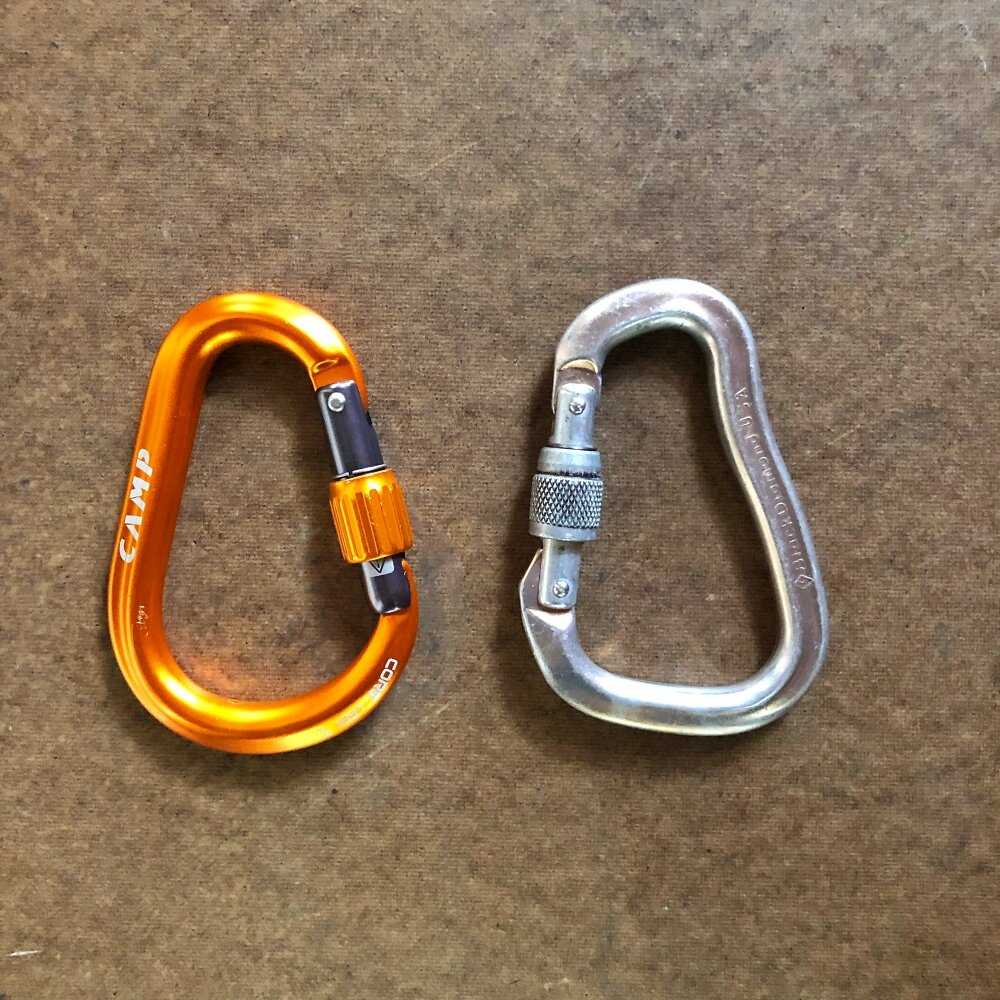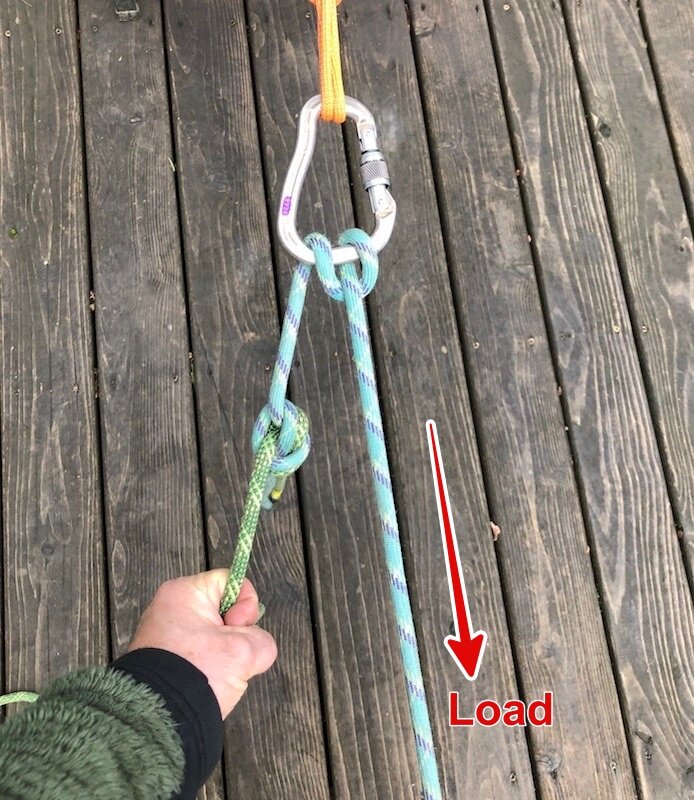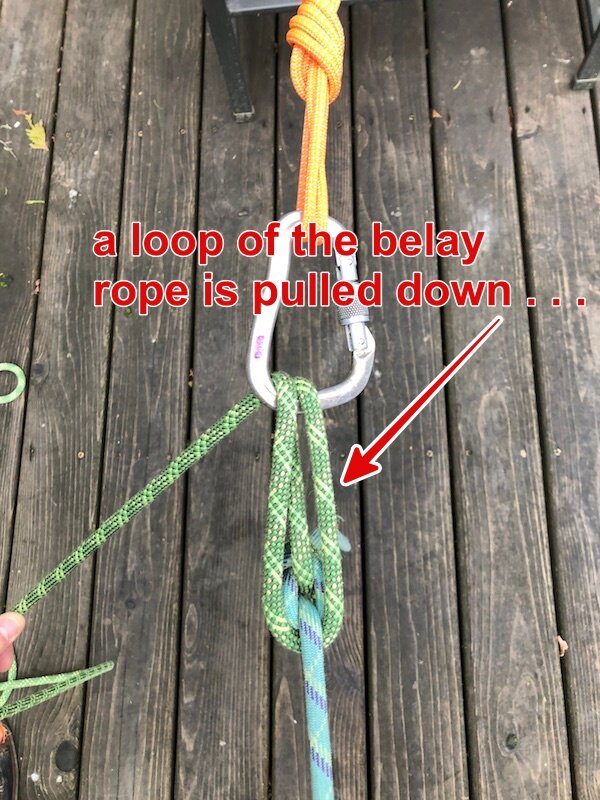The MOFT - a very Crafty Rope Trick
Note - This post discusses techniques and methods used in vertical rope work. If you do them wrong, you could die. Always practice vertical rope techniques under the supervision of a qualified instructor, and ideally in a progression: from flat ground, to staircase, to vertical close to the ground before you ever try them in a real climbing situation.
I first saw this tip from IFMGA Rock Guide Karsten Delap. Connect with Karsten at karstendelap.com
“MOFT” stands for Munter Overhand Feed Through”. It’s a very #CraftyRopeTrick that allows you to pass an overhand knot that’s connecting two climbing ropes directly through a munter hitch (or a Super Munter hitch, which adds more friction) either when lowering or (less common) when rappelling.
There may be a few (probably rare) times when you may need to do this, such as:
You partner is injured 100+ meters up. They are not able to rappel on their own. You tie two ropes together, and lower the injured person 120 meters at a time using an MOFT. You then pull up the ropes and rappel normally. (Or, if it's a serious injury, fix the rope, rappel the single line and come back later and get your rope.)
You, experienced climber, are on an alpine route with two relative beginners. On the descent, there’s a long section of fourth class rock and 50 degree snow that the beginners cannot easily manage unroped, but you can safely down climb. You tie both the beginners in close to the end of the rope and lower them both down two rope lengths / 120 m off of a bomber anchor, with a MOFT. When they are on safe ground, you then break down your anchor, untie the rope, toss it, and down climb. Instead of six rappels, you’ve done one lower and a down climb. Everybody down fast, no rappelling, no beginners having to pass the knot.
You and your partner are descending a big wall route with your haul bag. You’re within two pitches of the ground. You tie two ropes together and lower the pig to the ground, using an MOFT to pass the knot. You secure one end of the ropes to the anchor. Partner 1 raps to the ground on a single strand, passing the knot on the way. Partner 1 unties the rope from the pig. Partner 2 pulls up the rope and does two raps to get to the ground. Because, rapping with the pig is generally a hassle and best avoided when possible.
Notes . . .
This is a fairly advanced maneuver that you absolutely need to practice before you try in the real world. It’s definitely strange, at least it was for me the first few times I tried it, and I did not find it very intuitive. In fact I had to do it a few times in slow motion to really understand what was going on!
Practice both the lower and the rappel. The concept is pretty much the same, the execution is slightly different.
First off, for lowering practice, you need some tension on the rope to really do this right. The easiest way is to have a friend just lean back with body weight on the rope a few feet away (on a flat floor please, not on a cliff the first time you try this!)
Second, you’re going to be lowering and rappelling on a munter hitch. Be sure you know how to tie it, and how to lower on it. Use a friction hitch backup attached to the brake strand of the rope, and clip the hitch to your belay loop with a locking carabiner.
Third, this requires a large diameter HMS, pear-shaped locking belay carabiner. Sidenote, if you want to learn what “HMS” means, click here.
Good choices for a carabiner would be the DMM Boa, Black Diamond Rocklock (photo below) or similar extra-wide carabiner. Do not try this unless you have a wide HMS carabiner, or else the knot could get stuck.
This works best on skinnier ropes. Any rope under about 9.5mm should be fine.
Photo: CAMP Core Lock on the left, Black Diamond Rocklock on the right. You need a large HMS carabiner like this for the MOFT.
Here’s how it works for lowering. (It’s pretty much the same for rappelling.)
Tie two ropes together with a flat overhand bend.
Tie your partner in one end of the rope.
Tie a munter hitch onto the large diameter carabiner on the anchor master point, and start lowering your partner. Back up your lower: put a friction hitch on the brake strand and clip it to your belay loop. (For clarity, not shown in the photos below.)
When the knot connecting the ropes arrives at the carabiner, continue lowering (or rappelling) slowly. Try to assist the tails of the rope through the carabiner, but do it carefully so your fingers don’t get caught. Yes, the overhand bend will pass THROUGH the Munter hitch and carabiner! (Like I said, Crafty Rope Trick for sure!)
If you're lowering someone, if they can stand up for a moment and take the weight off the rope when you do this, it’s a lot easier.
If you did it right, once the knot passes through, you’re going to have what looks like a strange looking mess of three strands of the lowering rope coming down from the carabiner, looking something like this. Don't worry, that's what it’s supposed to look like.
The “U” shaped loop of the munter is caught on the overhand bend. Yes, this looks like a mess, but there’s an easy fix. When you’re practicing, this is the part you may want to do slowly to see what’s going on.
Try to keep this loop small. The larger it is, the more you're gonna drop your partner which they probably won't like.
Important safety note! Do NOT reach through the loop of the rope to grab the tails, you could lose a finger! Instead, reach below the loop, take the two tails, and carefully push them through the loop.
Once you have the two tails passed through the loop, pull on them. Warn your partner before you do this, they’re going to drop a little! At this point, if the person being lowered can lean into the rock or slightly unweight the rope for a moment, that makes is a bit easier.
The more the knot has passed through the carabiner, the more they will drop, so as seen below, ideally don’t let that overhand knot go more than about 6 inches / 15 cm below the carabiner.
Now, the munter hitch will magically POP back onto the carabiner, and you can continue lowering. Yes, it looks like an optical illusion, as in “what the hell did I just see!?” Try it a few more times in slow motion to see what’s really happening. It's quite amazing!
It might be a little exciting for your partner if they hear a popping noise and the rope suddenly drops a foot. This scenario will be a much less dramatic if you can have your second lean in on some kind of a stance to momentarily take their weight even partially off the rope. Actually, with dynamic ropes and your partner being 60 meters below, they may not even feel it.
Also, it's probably best to do this when using a standard dynamic rope. If you do this with a semi-static rope, the extra little drop can put additional force on the anchor, which is generally not a good thing.
Some people seem concerned that this will shock load the anchor. That's not gonna be a problem, because you've got 60 meters of dynamic rope below you. Yes some of the stretch is taken out, but it's still going to be very gentle on your anchor. If your anchor is more than halfway decent, this is not an issue.
Finally, here's a nice Instagram reel that shows how it's done. They’re using a double fisherman's to connect the ropes, which is even more bulky than an overhand, and it still works fine.






